I’ve managed to write about Xi’An Impression a few times so far on Braise without ever actually writing about Xi’An Impression, so it feels about time to rectify that.
I’m not really sure where to begin with it, a restaurant that has shaped my relationship with Chinese food, with food at large, and even with my partner. I’m not even sure Braise would exist if it weren’t for my first encounter with Xi’An Impression’s bouncy biang biang noodles, thick, chewy ribbons that arrive doused in chilli oil, leaving you the satisfying task of stirring to coat every dense strand. They have, in their own small way, changed my life.
Let’s rewind a little. I wasn’t always obsessed with food. I mean I liked it, obviously, and generally ate entirely too much of it. I’ve always cooked, and tried to go to the best restaurants my budget could stretch to, but that was about the limits of my interest.
That only really changed around 2018. I started travelling more through work, and realised Google Maps was a great way to save the restaurants I liked in the cities I tended to return to. Before long I realised the same might be useful back home, so started tracking and pinning where I ate in London. That simple act of engagement with where I ate and when, saving and logging the places I enjoyed, sparked the desire to dig deeper, to find more restaurants to add to my map.
Xi’An Impression was one of those restaurants. I couldn’t tell you where I first heard about it from - though Eater wouldn’t be a bad guess - because it was a ubiquitous presence on Islington restaurant listicles, one of those spots that seemed to have been agreed on by committee.
More importantly, it stood out because I had absolutely no idea where Xi’An was, what biang biang meant, or what to expect from a restaurant that served non-Cantonese Chinese food. A takeout order of egg-fried rice, duck pancakes, and pan-fried pork dumplings was one of the special occasion dinners par excellence in the Preston household, and growing up that was Chinese food, in its entirety, beyond hushed tones conversations about people eating chicken feet and the like.
By the time I first visited Xi’An Impression I’d already travelled to Hong Kong with work, so I was no longer totally clueless, but I’d still never had anything quite like it. Thick belt noodles, smacked cucumber salad, pork roujiamo - these were all new to me, almost alien, a taste of food that I simply hadn’t known was out there. I was hooked.
The biang biang noodles remain the order, and I’ve resigned myself to the fact that they’re a fixed element for me. I’ve tried to branch out, enjoyed the Qishan pork noodles, or the sweet and savoury melding of tomato and egg. But every time I’ve felt that little hankering of regret for the biang biang not eaten. I find that sichuan chilli oil compulsive, the noodle bite just right, the handful of pak choi leaves and braised beef chunks substantive enough to mask the fact that this is truly just a joyous bowl of chilli-flecked, fat-soaked carbs.
If I’d had no idea that food like this existed - 15 minutes from my flat, no less - I knew there must be more. Xi’an Impression didn’t simply expand my horizons, it’s the restaurant that made me realise they were limited in the first place, and gave me the drive to change that. I sought out hotpot and Sichuan food, tried Colombian and Peruvian, Ethiopian sharing platters and Georgian dumplings. I started to care not just about what I ate, but where it came from, who made it, what tied ingredients and culture and immigration routes together to bring that dish to that restaurant at that time and place.
And through it all, I kept coming back to Xi’An Impression, visiting in person occasionally and ordering delivery incessantly. I learnt I preferred the pork roujiamo to the beef, the fattier juices soaking deep into the circular seared flatbread that’s earned it the ‘Chinese burger’ nickname. I fell for the sliced chicken in ginger sauce, cold and gelatinous and squidgy as it is. I discovered wood ear mushrooms, and chilled liang pi noodles, and the simple fact that puffy boiled dumplings could be every inch as delicious as the crispy, seared versions I’d scarfed down as a kid.
I won’t go quite so far as to say that Xi’An Impression is responsible for my current relationship, but I certainly don’t think it hurt that when Vivian and I met a year and a half later I could talk my way around Chinese food without making a complete tit out of myself. Her family are from Ningxia, a province that borders Xi’An’s Shaanxi, and the food isn’t dissimilar, giving me just enough insight to avoid total embarrassment — though when I proudly told her I’d once made hand-pulled noodles myself, she was less than impressed, and to this day has never given me the chance to prove my skills.
But just as importantly, Vivian cared about food, deeply, and by this point so did I. It remains, for better or worse, arguably the only thing we really have in common. We don’t share sleeping patterns, work habits, or diets. She barely ever watches movies and can’t stand horror; I can’t get my head around the fact that her ideal afternoon involves watching a season or two of Gilmore Girls for the eighteenth time on her phone. The only thing that’s always, always united us is food - cooking it, eating it, obsessing about it. We were probably locked in from the moment that on date number three we agreed to do double dinner, squeezing in a visit to some new Dalston taco pop-up before making our reservation elsewhere.
Maybe I would have found my way to food obsession without Xi’An Impression. Maybe I would have discovered empanadas, or momos, or one of any number of things and been set down this path anyway. But it was biang biang noodles that opened my eyes, and Xi’An Impression that made them.
It was only when Vivian and I visited Xi’An itself last December that I discovered Xi’An Impression had not only opened my expectations, but shaped them. I’d since eaten at a few other Xi’An restaurants in London, including sister restaurant Master Wei (and, later, Dream Xi’An) and always found Impression my favourite, but wasn’t forced to examine that until I ate biang biang noodles in Xi’An itself and felt the same way. I wrote at the time that this “might well be a me thing,” that meal after meal at this singular restaurant had fixed my sense of what this dish could be, set a benchmark now as immutable as my mum’s roast potatoes or the way my dad would make the bacon sandwiches on a lazy Sunday morning. Certain dishes have these fixed points, specific preparations that become foundational, definitional, through time and repetition.
It’s only now that I realise the irony: Xi’An Impression was the catalyst that accelerated the change in my relationship with food through my late 20s, helped me think and feel and care about it more strongly than ever, led me to eat more broadly and open-mindedly than I’d ever thought possible. And it had, at the same time, taken a whole region’s food and locked it down firm in my mind, set a standard I may never shake loose.
Xi’An Impression is the restaurant that opened my culinary world, but I paid a price: it shrunk the entirety of Xi’An cuisine into one seven-table restaurant in Highbury in the process.



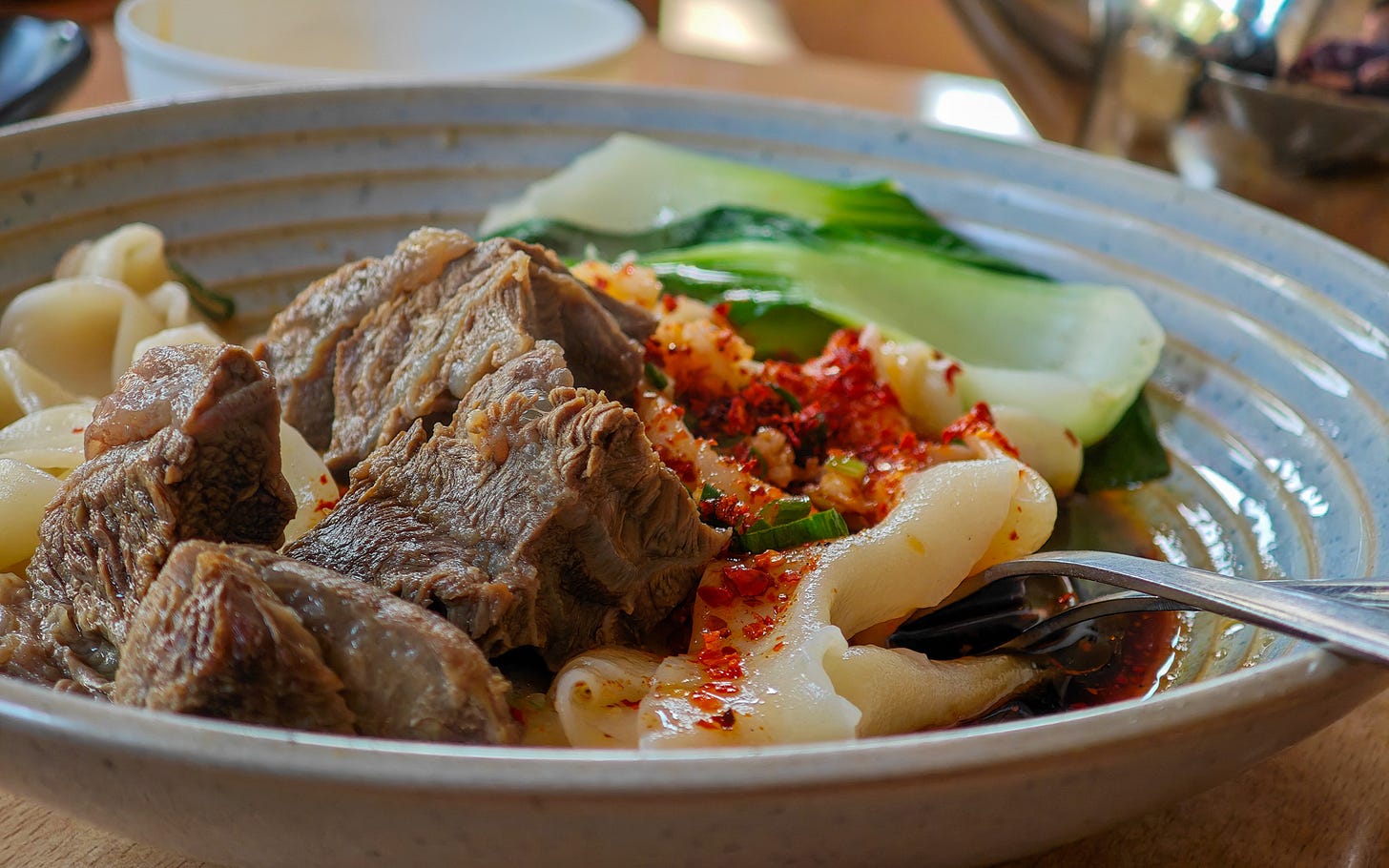
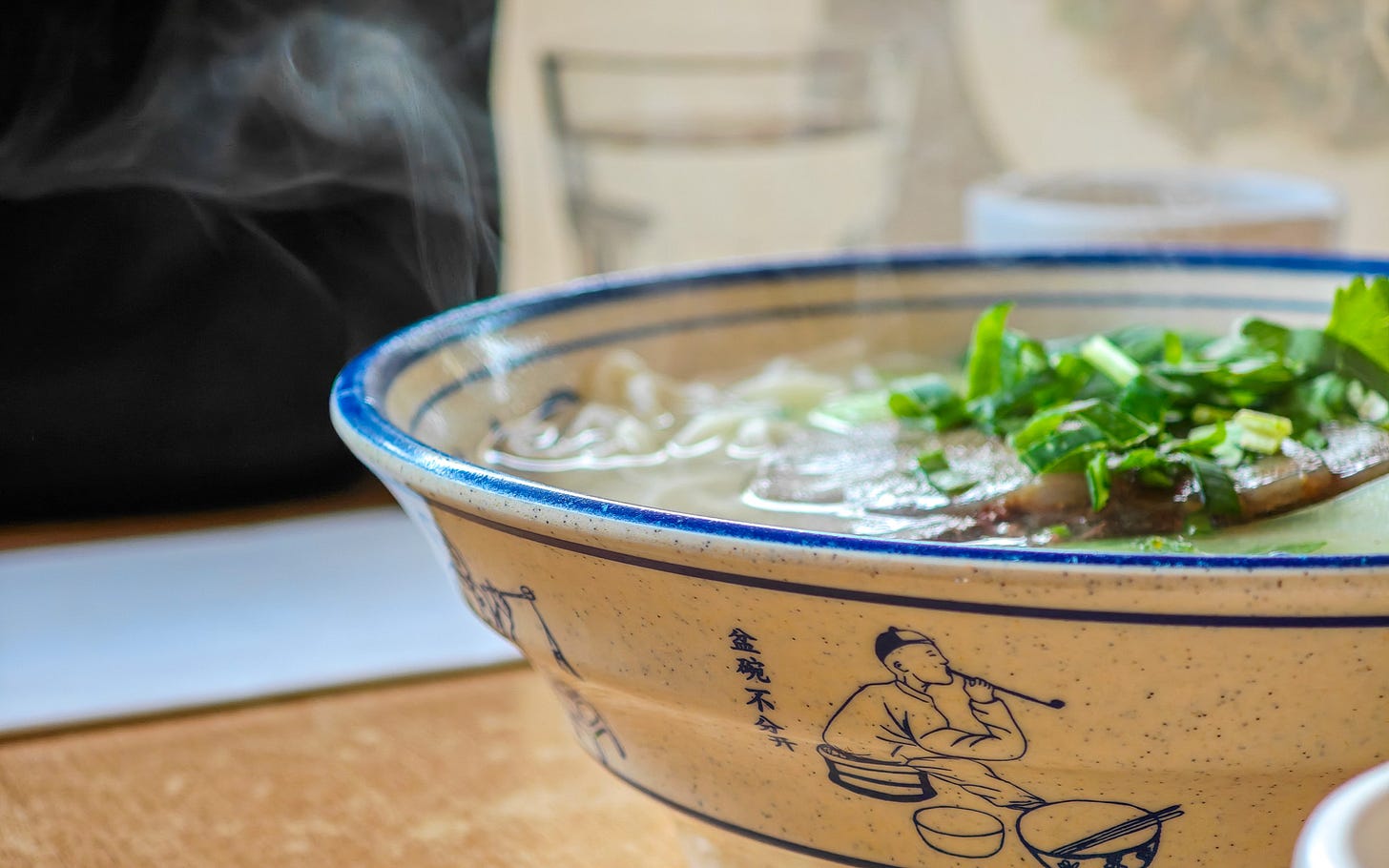
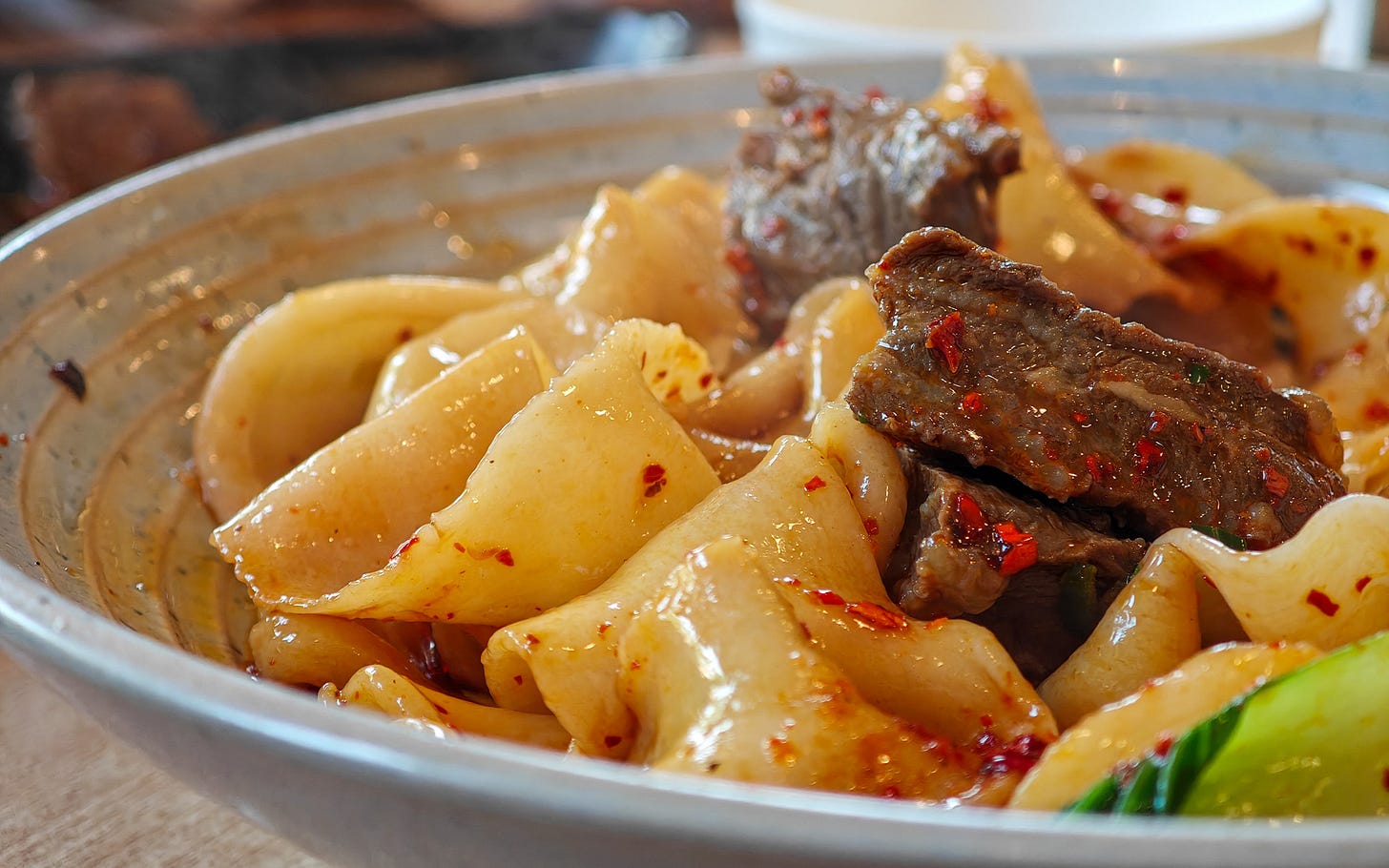

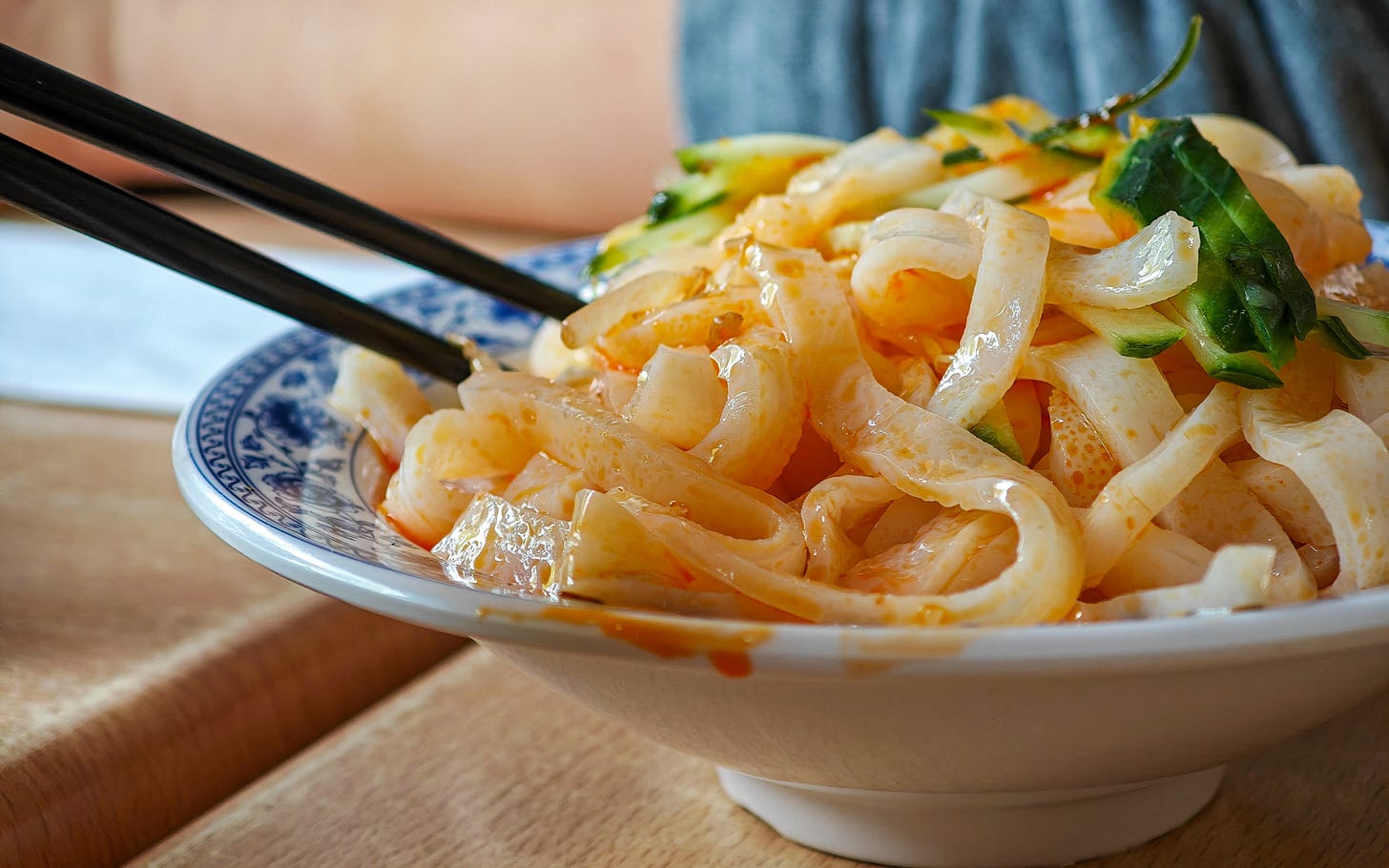
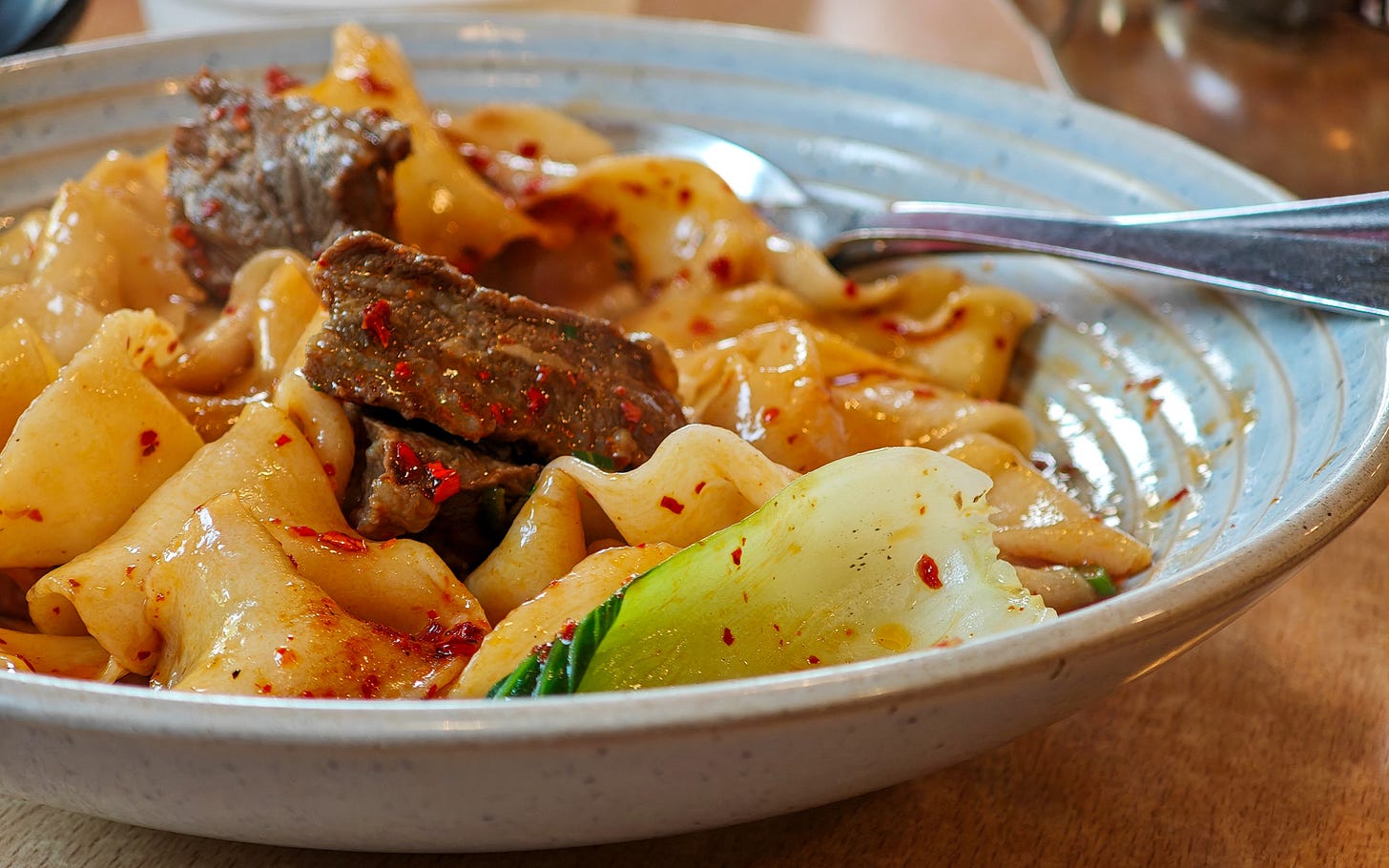
As a Dream Xi'An fan, I absolutely loved this edition! Beautifully written.
What Zoah said 🙂 plus am dead impressed about you making belt noodles 🏆💫